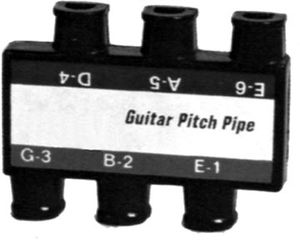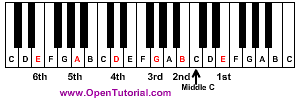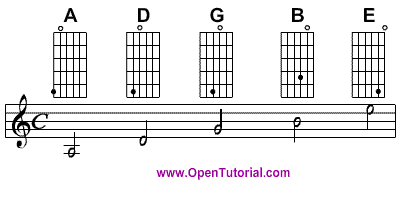Difference between revisions of "Tune a guitar"
(Added more info - Still in progress) |
m (added GuitarTuiningnotes.gif) |
||
| Line 51: | Line 51: | ||
=== Tuning the guitar to itself === | === Tuning the guitar to itself === | ||
| + | [[image:GuitarTuiningnotes.gif]] | ||
| + | |||
Once you have obtained a reference note (preferably for the 6th string E) you can tune each string of the guitar in the following manner: | Once you have obtained a reference note (preferably for the 6th string E) you can tune each string of the guitar in the following manner: | ||
| Line 59: | Line 61: | ||
* Press the 2nd string at the 5th fret and pluck the note this will sound the note "E" Using [[#Proper Tuning Technique|proper tuning technique]] adjust the 5th string to match the note | * Press the 2nd string at the 5th fret and pluck the note this will sound the note "E" Using [[#Proper Tuning Technique|proper tuning technique]] adjust the 5th string to match the note | ||
* Re-check your strings and repeat the process if any have deviated | * Re-check your strings and repeat the process if any have deviated | ||
| + | |||
Revision as of 17:21, 3 August 2006
Intro
Contents
Proper Tuning Technique
TODO:Explain the proper method of tuning a guitar
Electronic Tuning Methods
TODO:explain different Electronic tuners and how to use them
Tuning by Ear Methods
If you do not have an electronic tuner then you must tune your guitar by ear.
To do this you must obtain a reference pitch. This can be done be several different methods.
These methods include:
- A pitch pipe
- Piano or keyboard
- A recorded sound
Pitch Pipe
A pitch pipe a device similar to a harmonica, when you blow through one of the pipes you get a musical note. Most pitch pipes have a 6 pipes, one for each string of your guitar.
Piano or Keyboard
To get a reference pitch from a piano or electronic keyboard use the following notes for each guitar string:
- For the 6th string use the "E" in the second octave below middle C (12 white keys below middle C)
- For the 5th String use the "A" in the second octave below middle C (9 white keys below middle C)
- For the 4th String use the "D" in the first octave below middle C (6 white keys below middle C)
- For the 3rd String use the "G" in the first octave below middle C (3 white keys below middle C)
- For the 2nd String use the "B" in the first octave below middle C (1 white keys below middle C)
- For the 1nd String use the "E" in the first octave above middle C (2 white keys above middle C)
Recorded Sound
A CD where you know the note being played can be a good place for a reference note for instance the 1st note in the baseline of the song "Crazy on you" by Heart is an A
Use the Flash Guitar Tuner below to listen to sound of each string. Most "Learn to play guitar" books come with a CD that have the recorded sounds of each string such as (ISBN 1875726373
From your head
If you have the ability to hear the sound in your mind's ear or if you can sing the note then this is the least expensive method of all.
Tuning the guitar to itself
Once you have obtained a reference note (preferably for the 6th string E) you can tune each string of the guitar in the following manner:
- Press the 6th string at the 5th fret and pluck the note this will sound the note "A" Using proper tuning technique adjust the 5th string to match the note
- Press the 5th string at the 5th fret and pluck the note this will sound the note "D" Using proper tuning technique adjust the 5th string to match the note
- Press the 4th string at the 5th fret and pluck the note this will sound the note "G" Using proper tuning technique adjust the 5th string to match the note
- Press the 3rd string at the 4th fret and pluck the note this will sound the note "B" Using proper tuning technique adjust the 5th string to match the note
- Press the 2nd string at the 5th fret and pluck the note this will sound the note "E" Using proper tuning technique adjust the 5th string to match the note
- Re-check your strings and repeat the process if any have deviated
Tuning Charts
|
Standard Tuning
|
Drop D Tuning
| ||||||||||||||||||||||||||||
|
Open E Tuning
|
Open G Tuning
|
<flash>file=GuitarTuiningChart.swf|width=1024|height=768</flash>
This tutorial is a work in progress
This tutorial will be completed shortly
See Also
Bibliography
- (ISBN 0793582199
- (ISBN 0634009931
- (ISBN 1574241117
Amazon's Related Products
- (ASIN B0002E4YOM
- (ASIN B0002U8COE
- (ASIN B000EX60S4
|
NOTE: This page is currently undergoing a major edit. As a courtesy, please do not make edits to this page while this message is posted, in order to avoid edit conflicts. |


